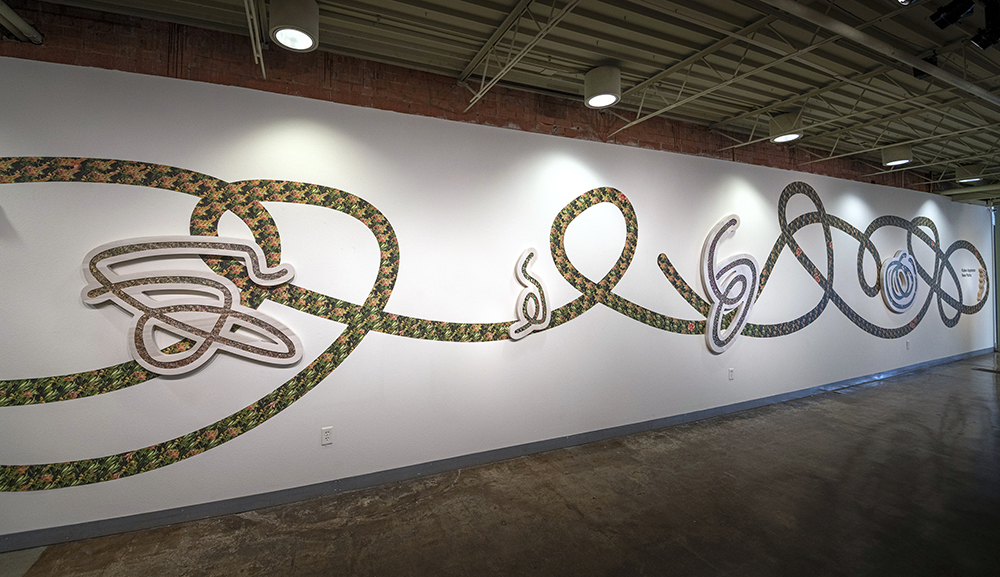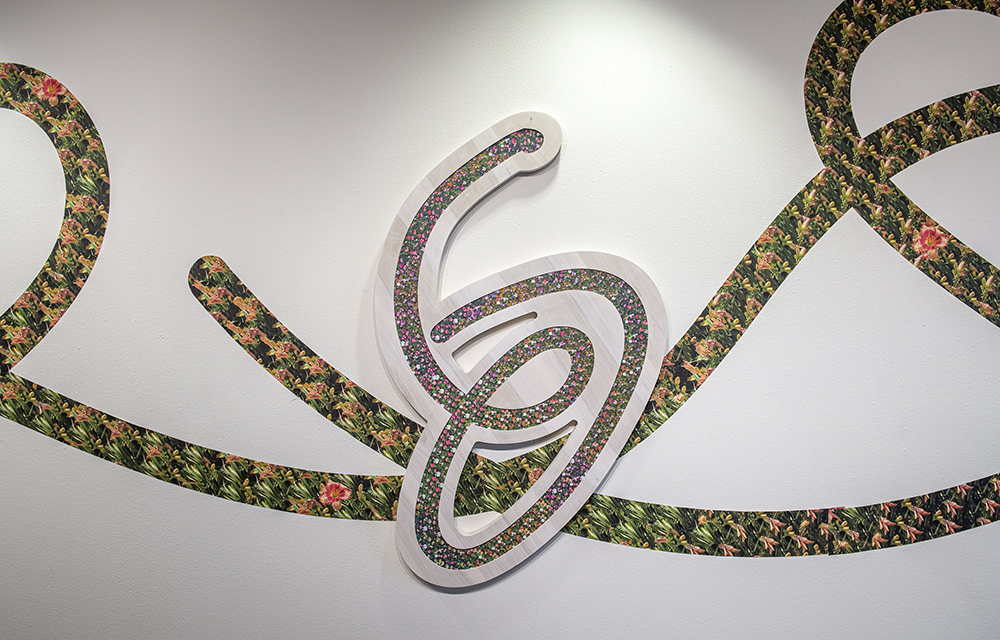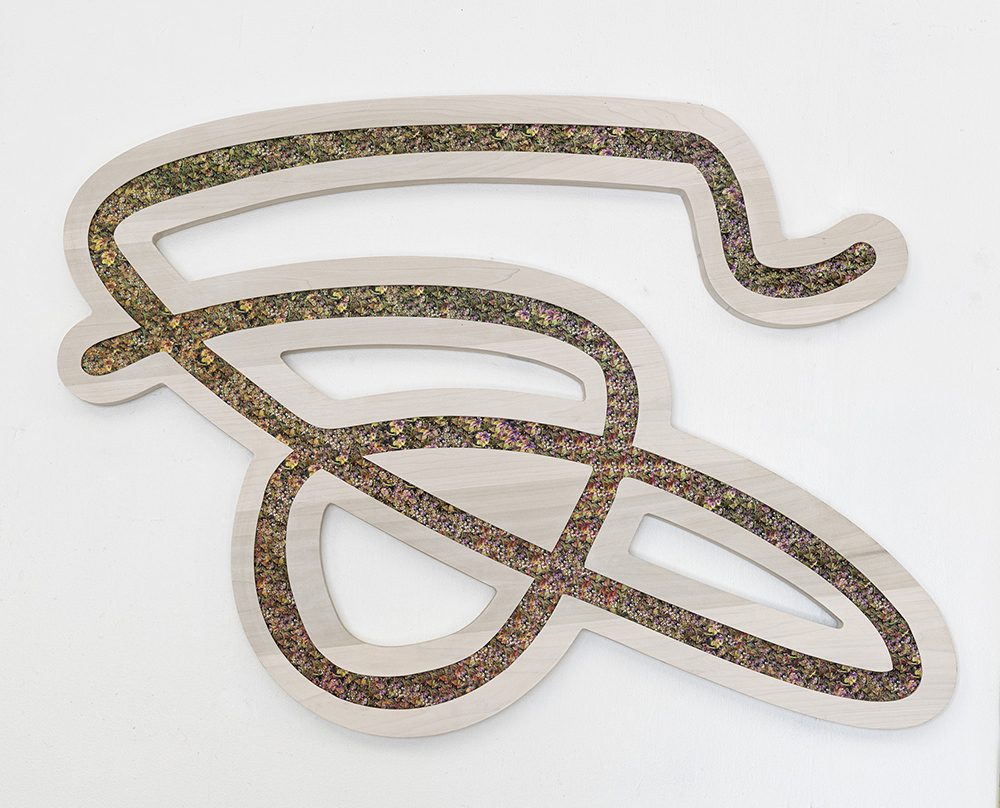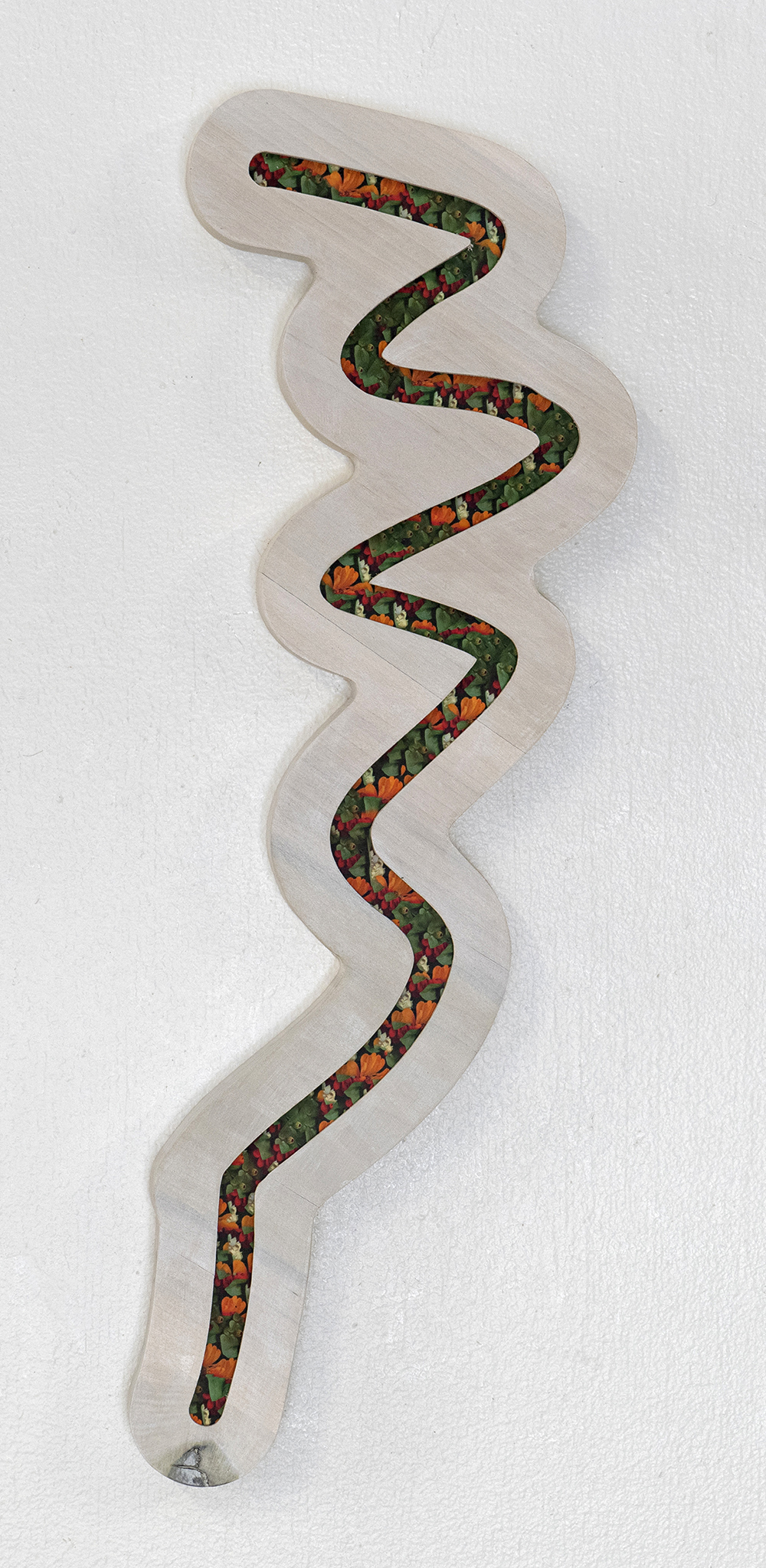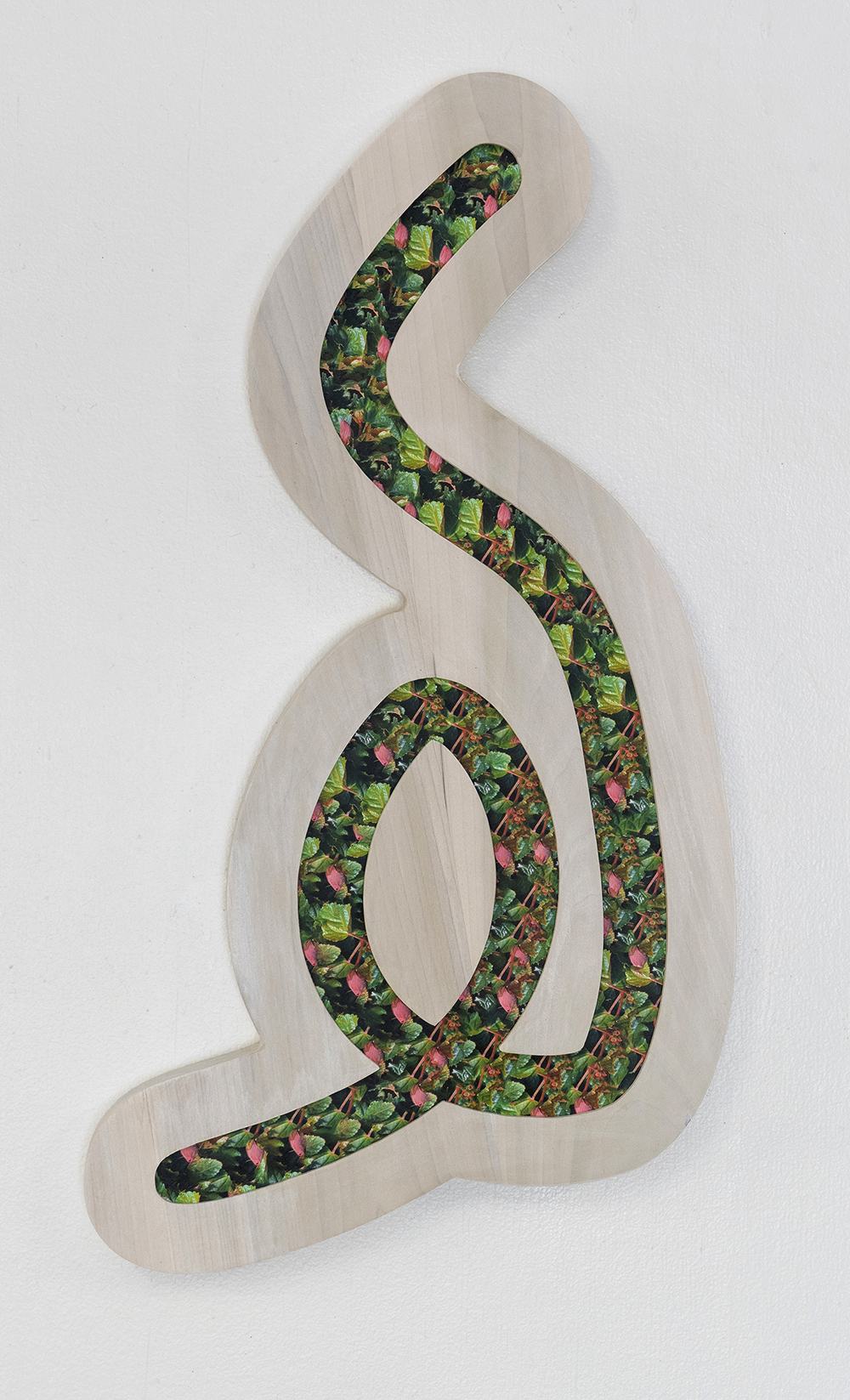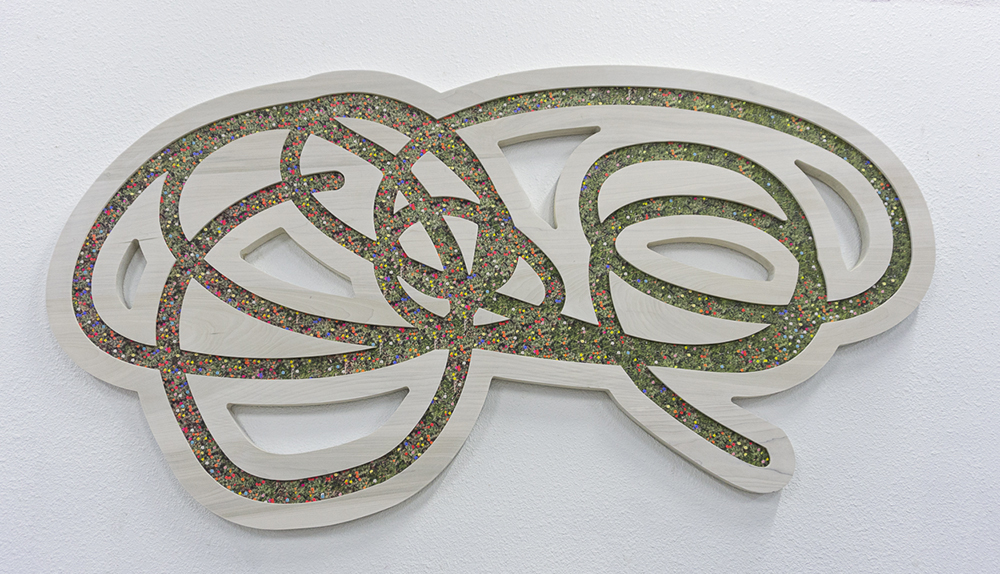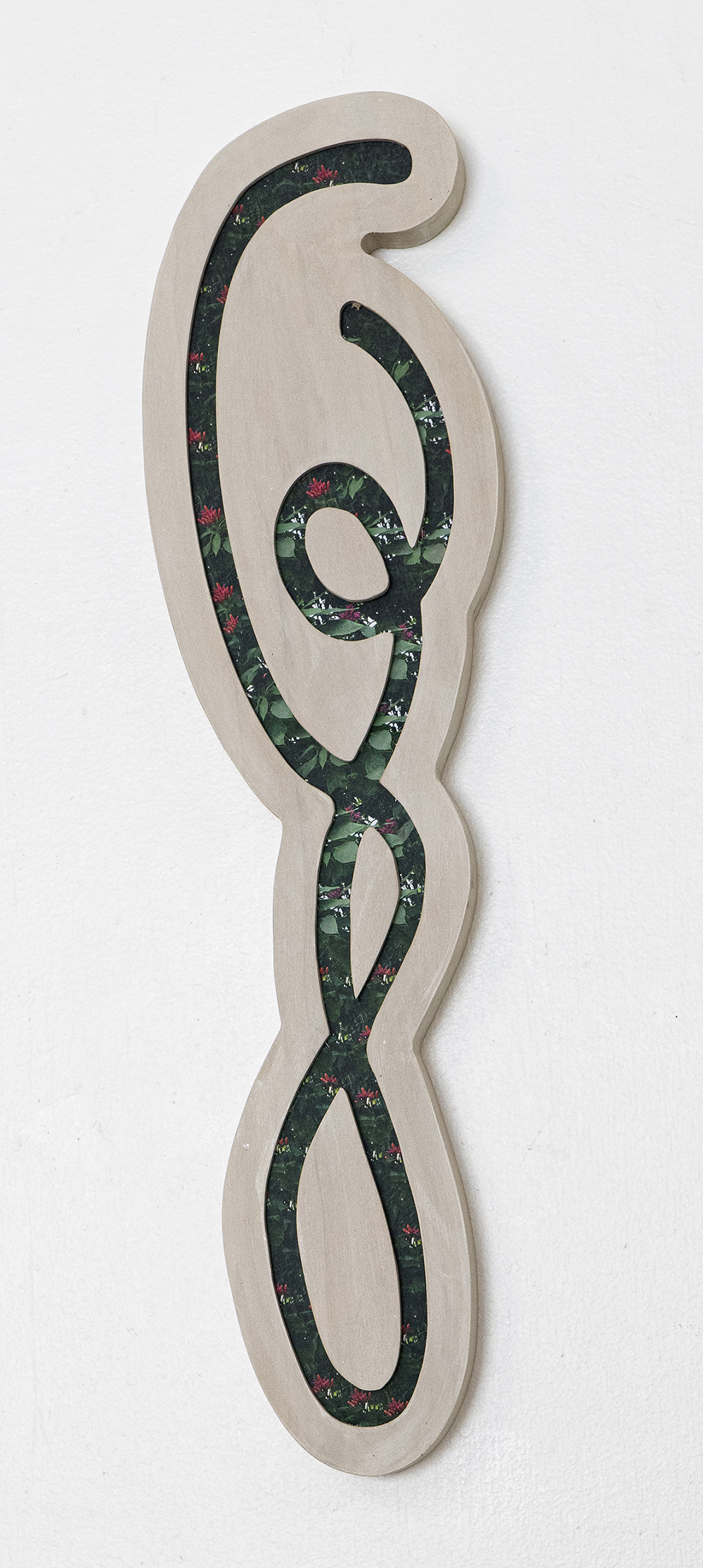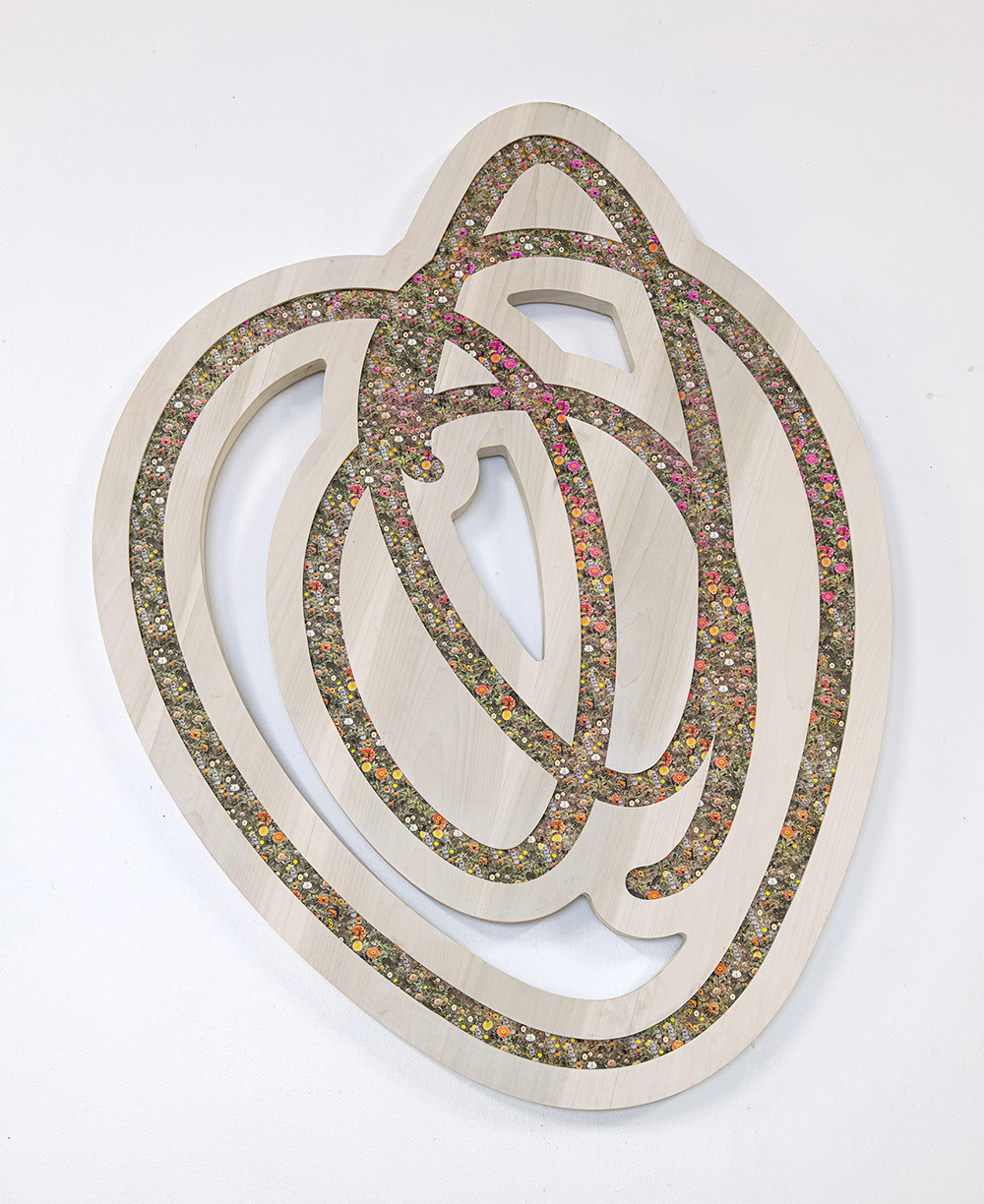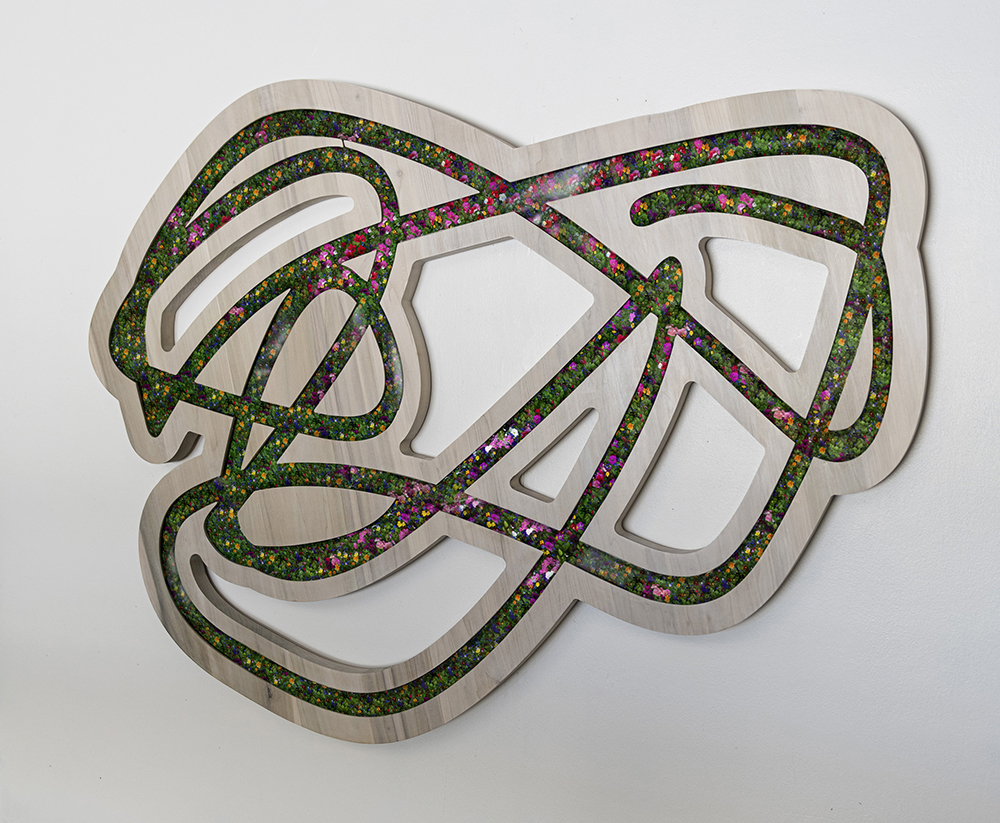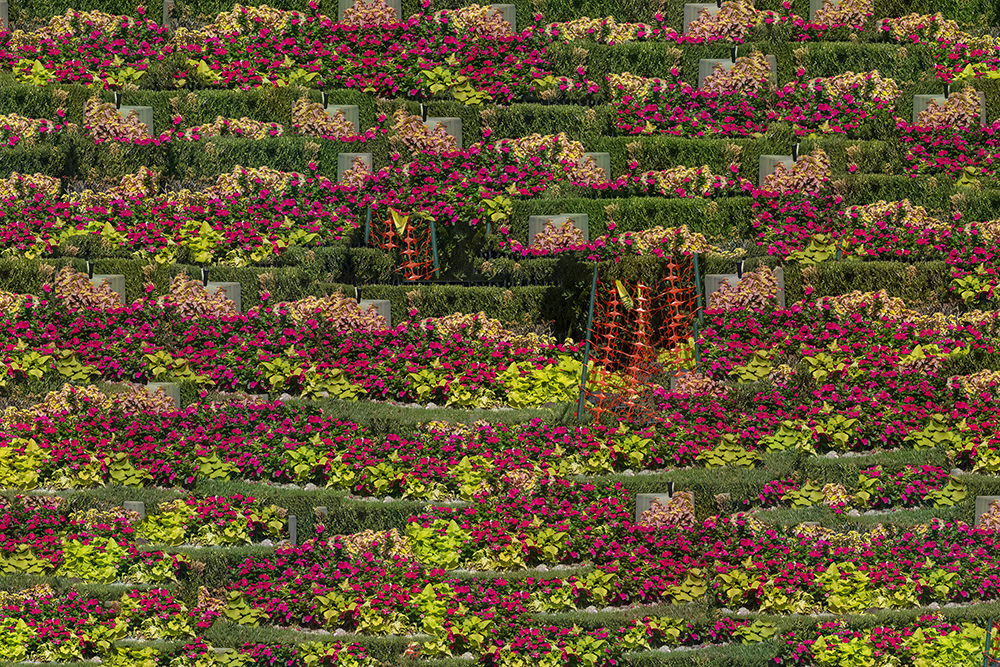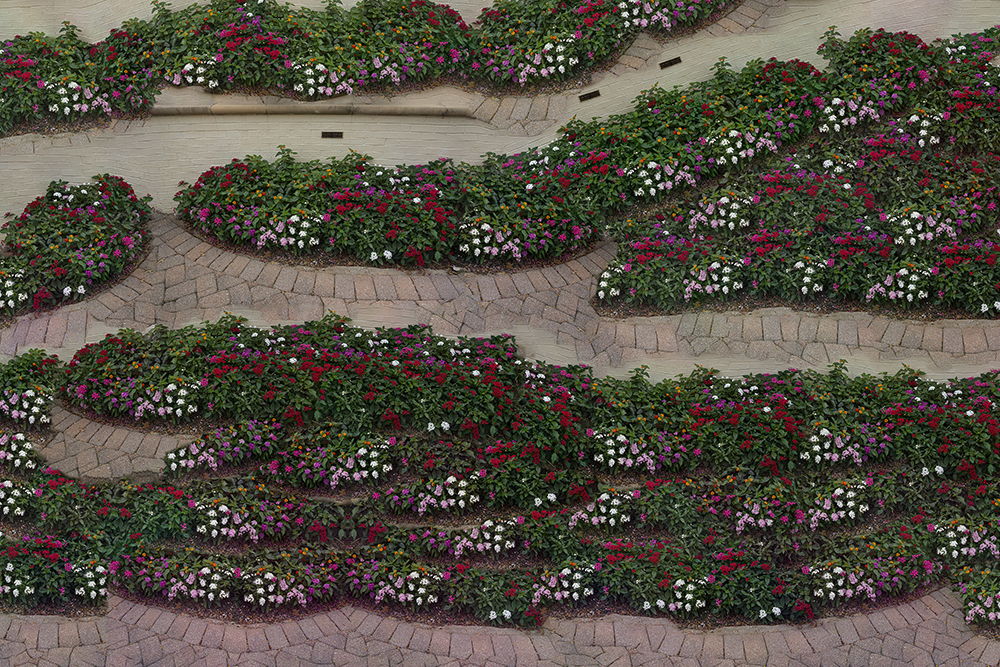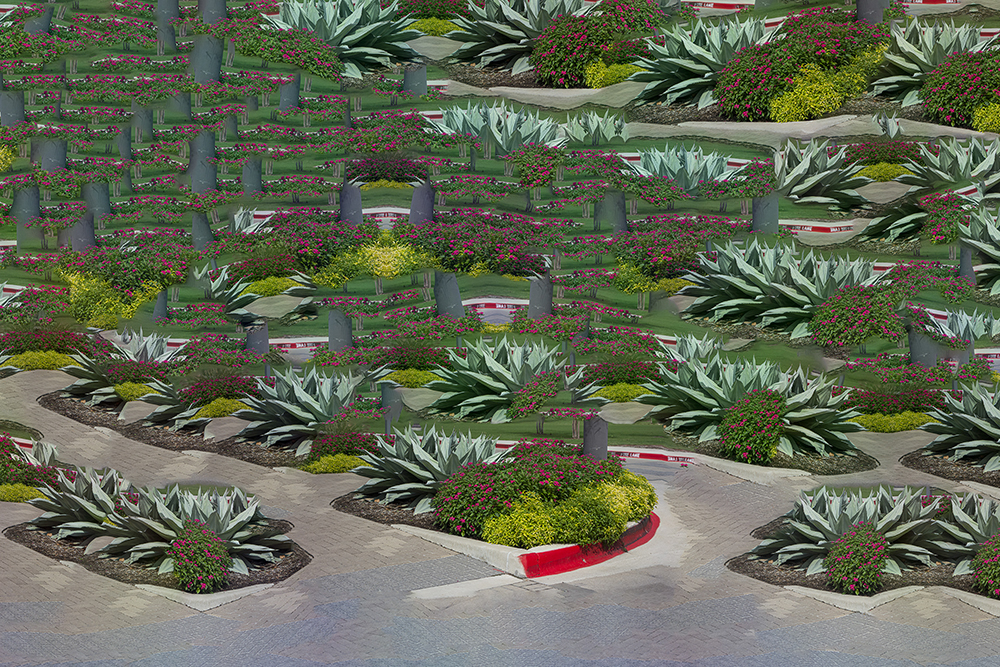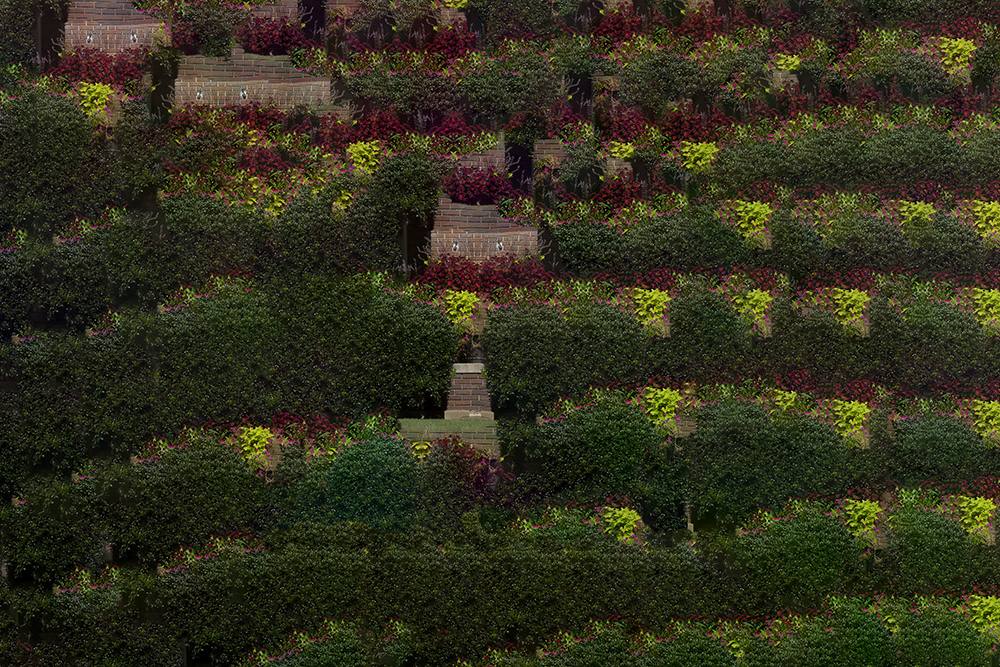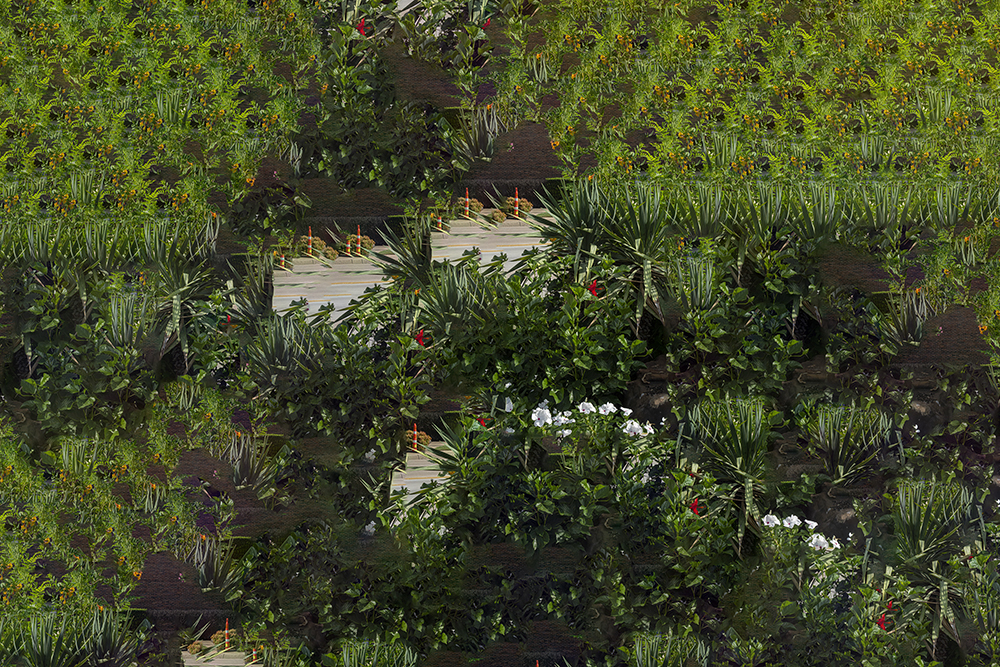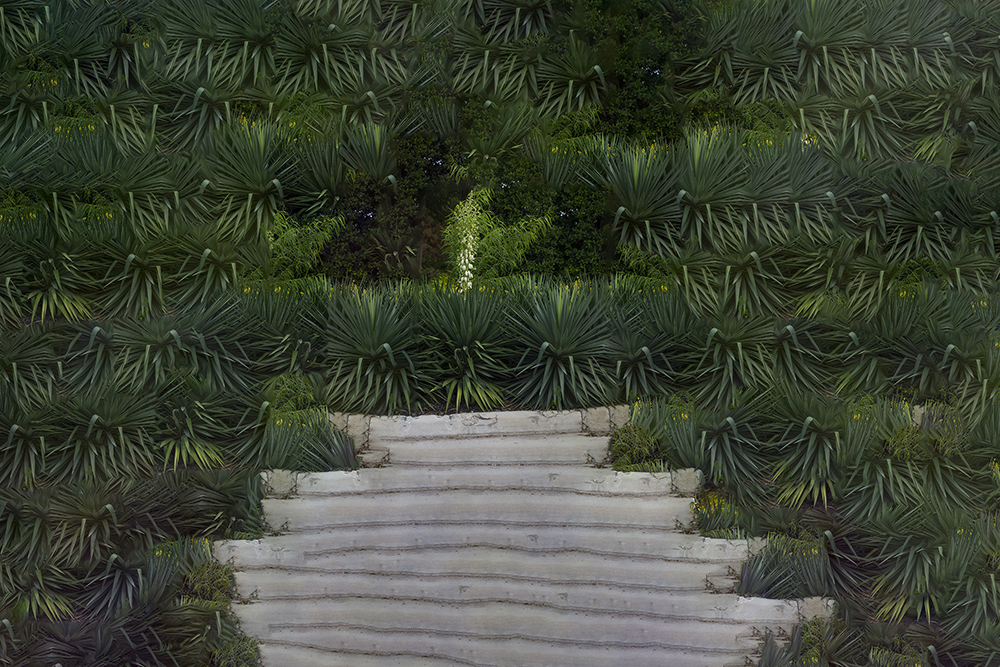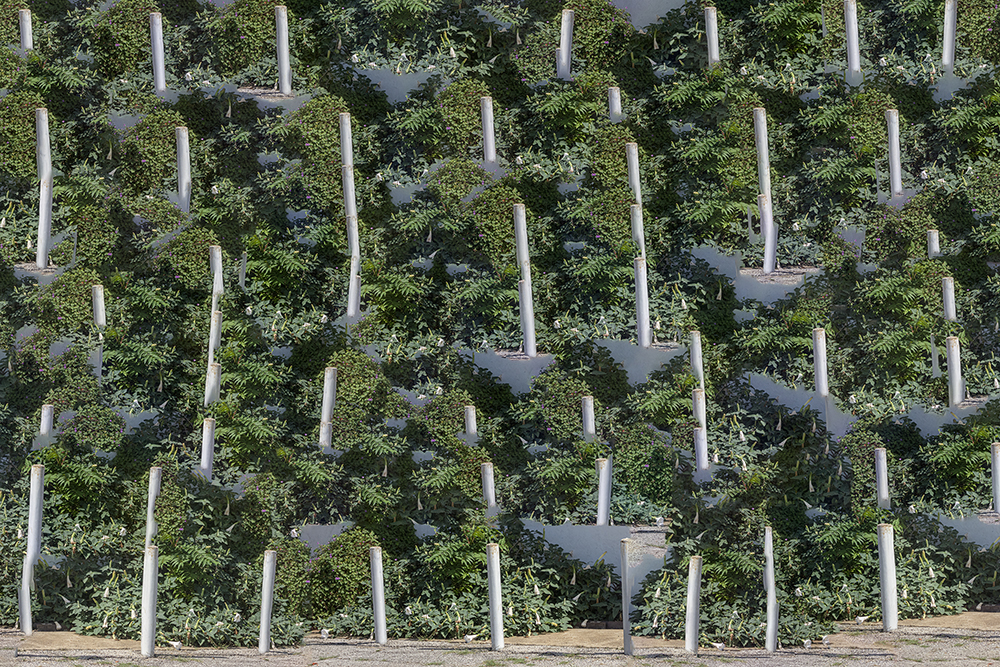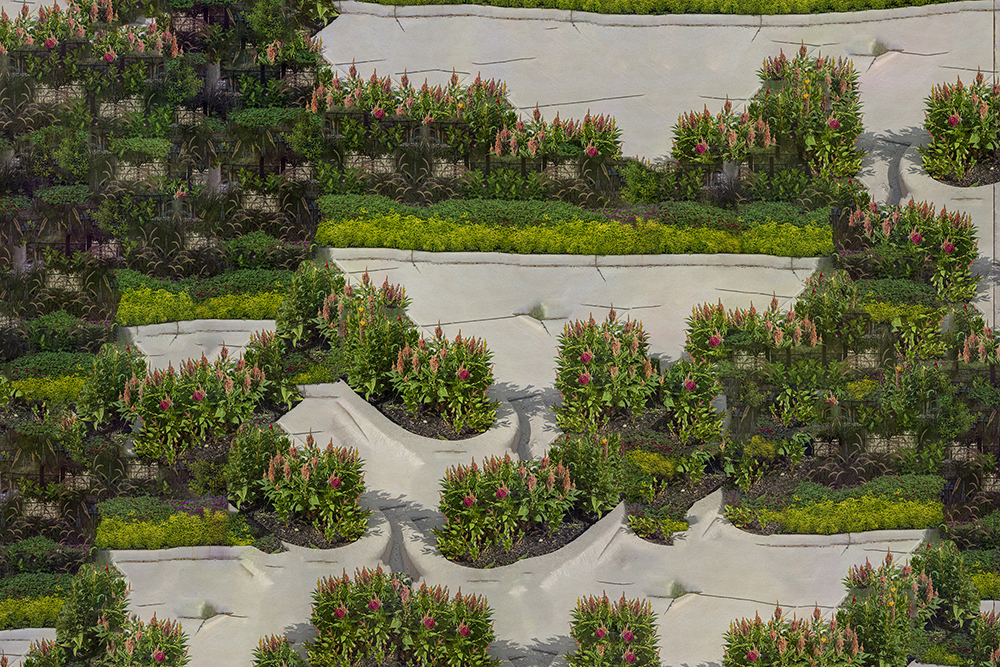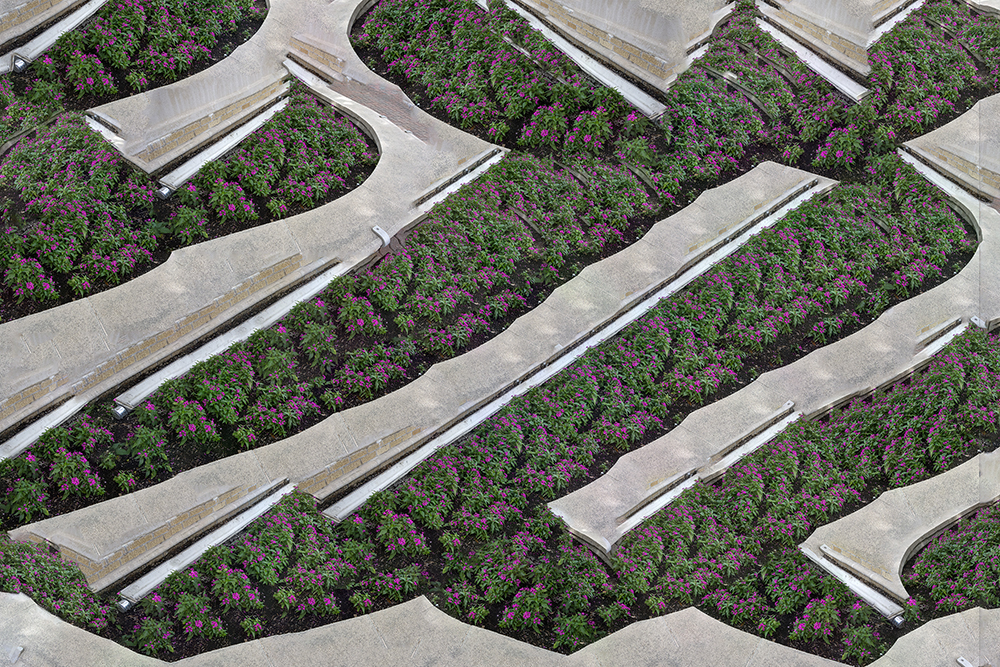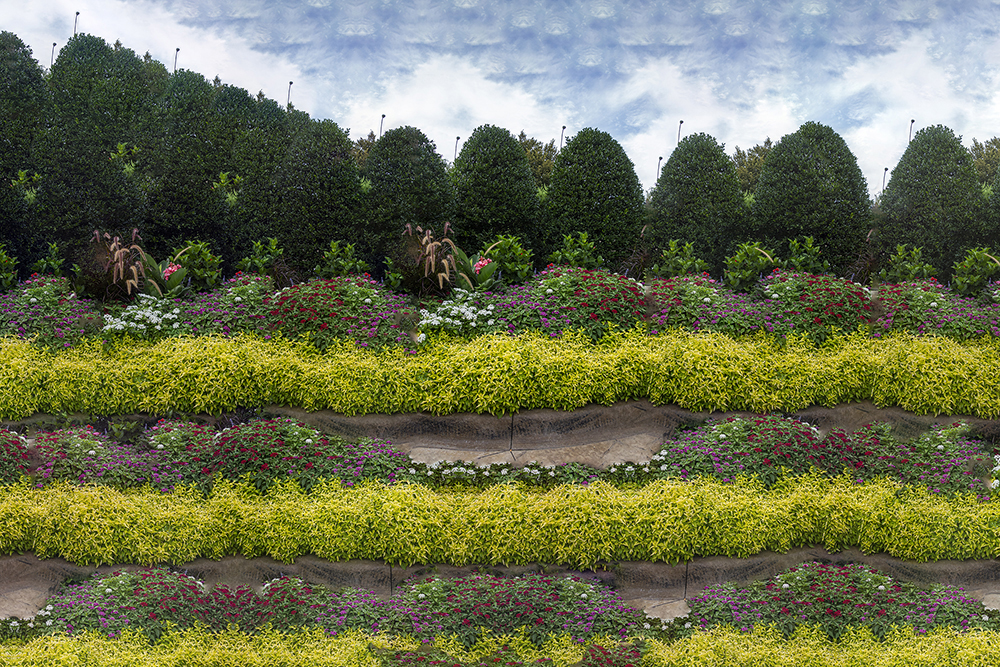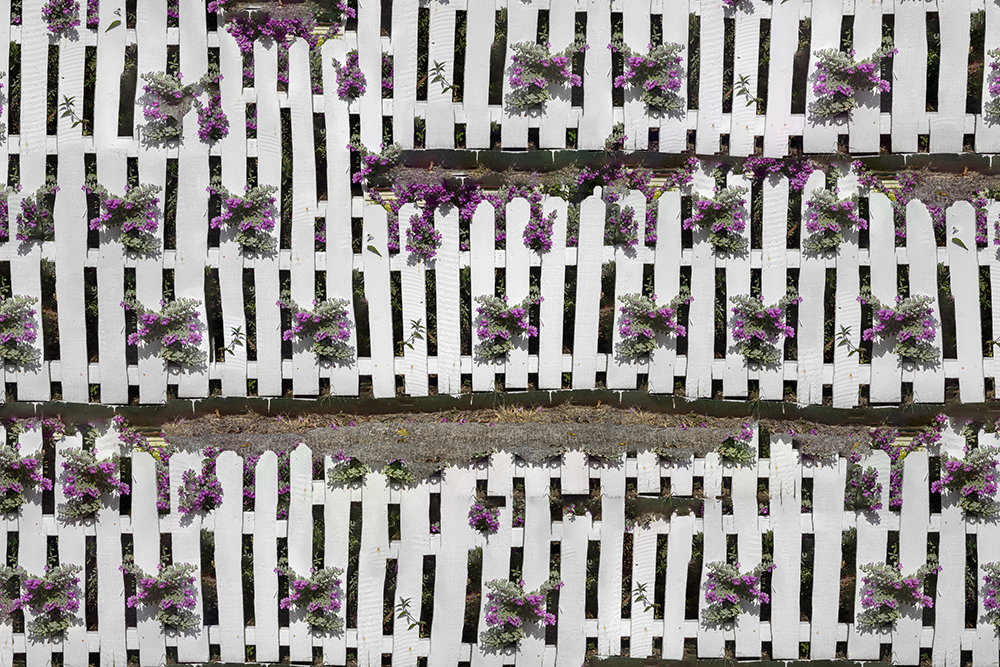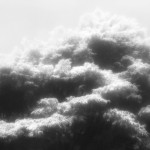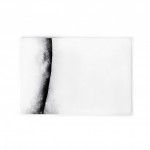PhotoNOLA: Kalee Appleton: New Paths, Floral Flextime
This week we are sharing some of our discoveries from the PhotoNOLA Reviews, an annual celebration of photography in New Orleans.
Kalee Appleton is an artist whose use of digital technology and tools prompts scrutiny of our relationship to imagery and our perception of photographic representation of the land. Both her series, New Paths and Floral Flextime, examine and challenge conventions of botanical photography and depictions of the landscape. I was drawn to Kalee’s use of, and emphasis on materials, as well as her appropriation of mechanical repetition as personal, artistic gesture. Through her images, we are encouraged to consider themes of reliance on technology, and the ways in which interactions with the natural are shaped and influenced by the virtual.
Kalee Appleton is a photography-based artist and assistant professor of Photography at TCU in Fort Worth, Texas. Originally from Hobbs, New Mexico, Appleton attended Texas Tech University in Lubbock and received a B.F.A. (2005) in photography. Shortly after graduation she worked as a corporate and aviation photographer, and she later attended Texas Woman’s University in Denton, where she received a M.F.A. (2014) in art. Appleton’s work deals with digital technologies and their effects on society, as well as with the nature of photography. Current, Appleton is a 2021 Amon Carter Community artist at the Amon Carter Museum of American Art. She has had her work highlighted in various print and online forums including DMagazine and Glasstire. Appleton exhibits her work at Erin Cluley Gallery in Dallas, TX and Ivester Contemporary in Austin, TX. She has exhibited nationally at Filter Photo, Chicago, Illinois; Fotofest, Houston, Texas; and Houston Center for Photography.
New Paths
My artistic research stems from the radical transformation in photography’s evolution from a film-based medium to a predominately digitally-based medium. Because photography has classically been accepted as a representation of reality, with its inherit nature of capturing subjects realistically and its ubiquitous nature on online platforms, I use the genre of photography as a symbolic echo of society and thus a metaphor for the influence of digital technologies on contemporary society. The exploration of the transition of photography from analog to digital adds to the greater discussion of the consequences of the digital revolution at this pivotal moment in time. In order to explore the complex transition of photography my work examines the nature of the materiality of a contemporary photograph and undermines the standards on which photography is defined today.
The series, New Paths, blurs the line between drawing, sculpture and photography, while challenging the traditions of botanical photography through exploration of technology and materiality. This work explores the complicated relationship of society and the land by displaying visual platitudes of idealized depictions of the land and details of the land. By controlling and restricting the physical frame to a gesture, a mark reminiscent of a photoshop postproduction brush stroke, digitally manipulated landscape imagery is manifested into a physical object that wavers from a flat 2D photograph to a 3D object. The digital nature of the altered photographic landscape is repeated or obviously falsified through various digital techniques. This digital-ness is transferred to the physical realm through the display within irregularly shaped wooden frames that contradicts the materiality of what is typically associated with a solid wooden structure and creates a sense of cohesion between natural and virtual motifs.
Floral Flextime
This body of work titled, Floral Flextime, explores the materiality of the digital photograph through the lens of contemporary technology and the current COVID-19 pandemic. With the use of the post-production algorithm in Adobe Photoshop, content awareness, the pictorial frame of the photograph is expanded past its original borders with duplicated photographic components and textures. The algorithm is designed to repeat and thus “fill” designated areas of a photographic file by intelligently duplicating pixels in close proximity to designated areas of a digital photograph. This tool’s main function is to allow users to easily remove unwanted aspects of an image. By subverting this algorithm’s original intent, images in Floral Flextime are produced by instructing the program to fill an expansive space, far past the image’s original frame. The resulting visual duplication that creates a unique sense of perspective that is obviously a falsified version of the original. This repetition is a visual representation of the manner in which COVID-19 has spread internationally, as this algorithm “spreads” comparably to a virus. This collaboration with a software component and the photographs, taken of flowerbeds while on walks during the pandemic, are a result that are seemingly left to chance. This lack of control parallels the feelings of individuals that where left helpless in the wake of the pandemic. The images are a mix of a digital aesthetic that is organized, yet chaotic. This organized chaos is reminiscent of the dependency of digital technology, while also referencing internet anxiety that expedited the mental health crisis throughout the world.
Posts on Lenscratch may not be reproduced without the permission of the Lenscratch staff and the photographer.
Recommended
-
Earth Week: Casey Lance Brown: KudzillaApril 25th, 2024
-
Earth Month: Photographers on Photographers, Dennis DeHart in conversation with Laura PlagemanApril 16th, 2024
-
Luther Price: New Utopia and Light Fracture Presented by VSW PressApril 7th, 2024
-
Artists of Türkiye: Eren SulamaciMarch 27th, 2024
-
European Week: Sayuri IchidaMarch 8th, 2024

